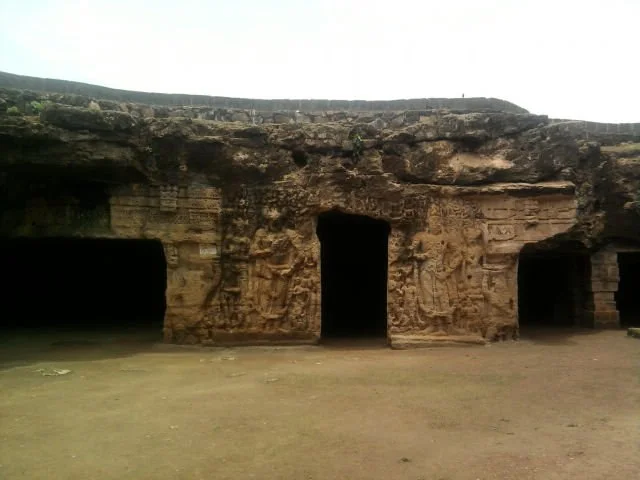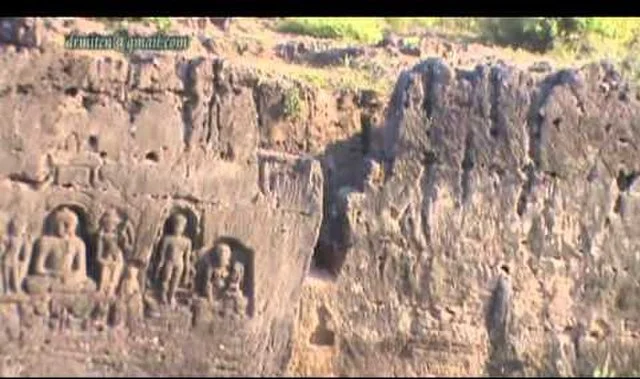The Dhank Caves, located near the village of Dhank in Gujarat, India, are an important archaeological site. These caves date back to the 1st century AD and represent a significant example of rock-cut architecture. The site contains a series of monastic caves that were likely used by Buddhist monks for meditation and living quarters.
Get your dose of History via Email
Historical Context

The Dhank Caves emerged during a period when Buddhism flourished in western India. The caves reflect the influence of both early Buddhist and local architectural styles. As a result, they provide insights into the cultural exchange between different communities during that time.
Architecture and Structure
The caves consist of multiple chambers carved into the soft sandstone rock. These chambers include monastic cells, prayer halls, and stupas. The main hall, or chaitya, features a large rock-cut stupa at its center, which served as a focal point for worship.
The intricate carvings on the cave walls depict various Buddhist symbols and motifs. These carvings demonstrate the skill and artistry of the craftsmen who created them. Additionally, some caves contain remnants of ancient paintings, further showcasing the artistic traditions of the period.
Significance
The Dhank Caves hold historical and archaeological significance for several reasons. First, they illustrate the spread of Buddhism in the region. The site also offers valuable insights into the monastic life of early Buddhists. Furthermore, the caves reflect the technological advancements in rock-cut architecture during that era.
Scholars and researchers study the Dhank Caves to understand better the religious and cultural dynamics of ancient India. The site provides essential evidence of the Buddhist monastic tradition and its impact on local communities.
Conservation Efforts
Today, the Dhank Caves face threats from natural erosion and human activity. Conservation efforts are necessary to preserve this invaluable cultural heritage. Local authorities and archaeological organizations have initiated measures to protect the site. These efforts include limiting access to sensitive areas and promoting awareness among visitors.
Conclusion
The Dhank Caves represent an essential chapter in the history of Buddhism in India. Their architectural features and historical context provide a glimpse into the lives of early Buddhist monks. As researchers continue to study the site, the Dhank Caves will remain a vital resource for understanding India’s rich cultural heritage.
Source:

